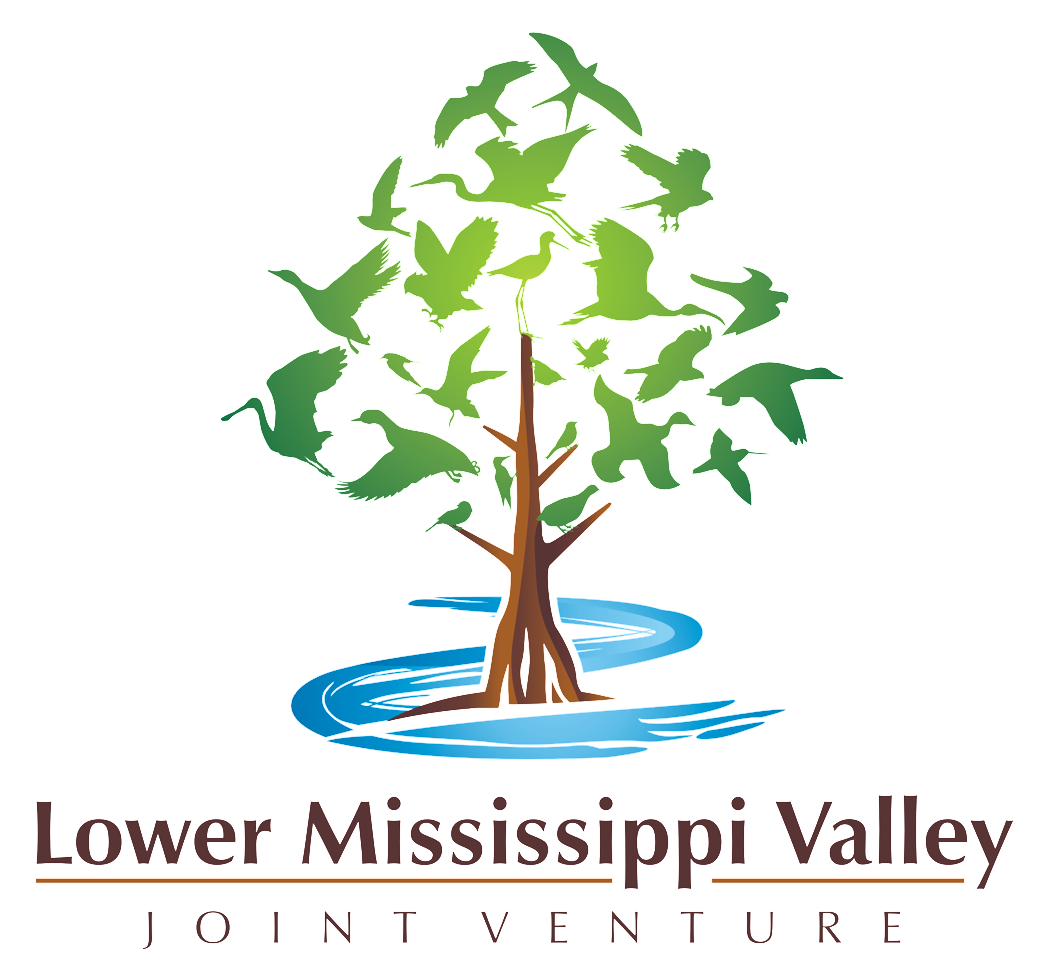About Conservation Delivery
LMVJV Conservation Delivery Networks
The LMVJV partnership strives to be comprehensive in its approach to bird conservation planning, implementation, monitoring, evaluation, and research. However, the ultimate goal of addressing each of these (Strategic Habitat Conservation) elements, is to facilitate the most effective and efficient delivery of priority bird habitat conservation. In an effort to refine its conservation delivery infrastructure, the LMVJV partnership has chartered the development of geographically-explicit Conservation Delivery Networks (CDN) as the forum for coordinating its on-the-ground actions. The following information is intended to reflect some of the most pertinent aspects of CDN establishment and function.
Conservation Delivery Networks
Maximizing our Greatest Assets: People, Knowledge, and Experience
CDNs are forums where members of the Joint Venture and other appropriate conservation organizations coordinate on-the-ground delivery of their otherwise independent efforts. The scope of coordination not only includes the implementation of individual projects, but also the refinement of programs as partners deal with emerging challenges such as urban sprawl, habitat loss and degradation, altered hydrology, and potential long-term effects of global climate change. CDNs provide the link between science at landscape scales (biological planning and conservation design tools) and more effective action on the ground. Importantly, this link also facilitates enhanced feedback from delivery staff to planners.
The primary objectives of a CDN are to:
Facilitate more effective communication, coordination, and collaboration among the full spectrum of conservation organizations working to positively impact the landscape for wildlife populations within the Lower Mississippi Valley Joint Venture region.
Facilitate more effective coordination between the biological planning/conservation design functions of the JV partnership and the priorities of JV partner staff responsible for conservation delivery.
Communication Between Planning & Delivery
One of the key assets of the LMVJV partnership is its appreciation of and ability to apply information and technology toward establishing science-based biological objectives at landscape scales. Through this process partners are able to focus on-the-ground conservation delivery using biologically-driven and transparent prioritization.
The ecological scope of the LMVJV’s responsibilities has expanded since its inception (from waterfowl to all birds), and the available information and technology have grown exponentially. The value of effectively conveying the partnership’s collective goals, objectives, decision support products, datasets, etc. “to the field” has grown accordingly. The role of Conservation Delivery Networks is to facilitate effective exchange of information between delivery staff (e.g., professionals on-the-ground) and planners. This approach is intended to refine and improve the conservation priorities and accomplishments of both.
Hence, CDN members are encouraged to strive for clear and explicit connections between the activity-based objectives of their programs and the biological objectives identified by the Joint Venture. As the biological planning infrastructure of the Joint Venture develops decision support tools that translate landscape-scale objectives into site-scale priorities, it is important that CDN members integrate these tools into their planning and delivery process. Likewise, biological planning and conservation design are refined only to the degree they are informed by what is happening on the ground. To this end, CDN members individually play a pivotal role in the growth and maturation of the Joint Venture partnership by supporting monitoring programs used in evaluating biological outcomes.
Coordination and Collaboration Among Conservation Delivery Partners
As conservation delivery staff attend to their many core duties, it is natural for them to keep their eyes and minds focused on familiar, immediate, and nearby tasks. However, given that our ultimate goal is establishing landscapes capable of indefinitely sustaining trust wildlife populations, new and novel collaborations among partners that result in even greater impacts will be critical to success. Only through regular, effective communication can this occur. CDNs are designed to foster such communication among conservation partner staff – particularly those staff directly responsible for actions on-the-ground.
It is the role of the CDN to assemble the critical mass of conservation delivery staff from all appropriate conservation organizations within its geography and to share information and ideas regarding the most efficient and effective means of meeting landscape objectives. This approach functions to more effectively leverage the capacities of multiple organizations through sharing of information regarding ongoing and planned projects, assessing and seeking sources of matching funds, identifying mutual information and monitoring needs, and capitalizing on areas of overlap (geographic & functional) that represent potential for strengthening partnerships.
Moving Ahead with a Common Vision & Increased Resources
CDN members are guided by the vision that through cooperative coordination, leveraging, and targeting of their collective actions they may more effectively achieve, at ecoregional scales, the measurable biological outcomes sought by conservation organizations within the Lower Mississippi Valley Joint Venture region. Further, the scope of coordination within CDNs is intended to include the development and implementation of grants through programs such as the North American Wetland Conservation Act, Neotropical Migratory Bird Conservation Act, State Wildlife Grants, and private foundations to accomplish identified objectives as well as leverage the otherwise stand-alone resources of its conservation partners.
General CDN Documents
2010 CDN General Operating Guidelines
Steve Brock, Partnership Coordinator MAV, Lower Mississippi Valley Joint Venture, 601-529-4235, Steve_c_brock@fws.gov
Bill Bartush, Partnership Coordinator WGCP, Lower Mississippi Valley Joint Venture, 903-570-9626, bbartush@abcbirds.org




